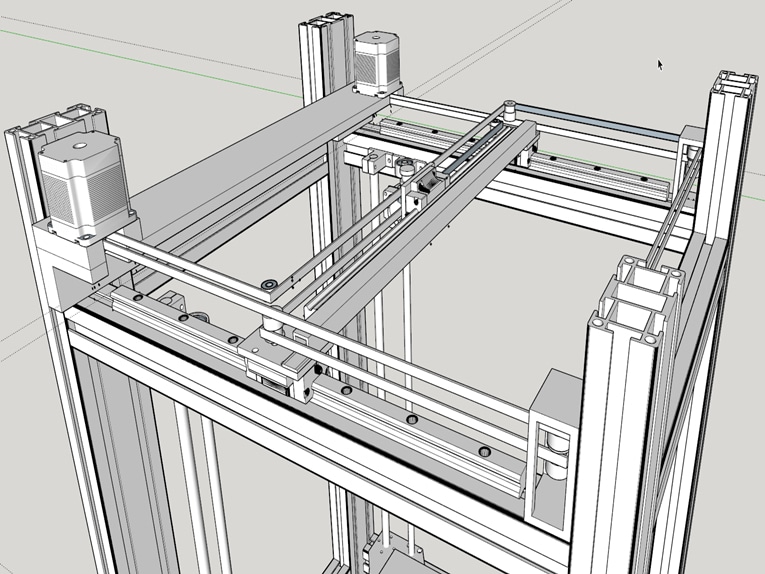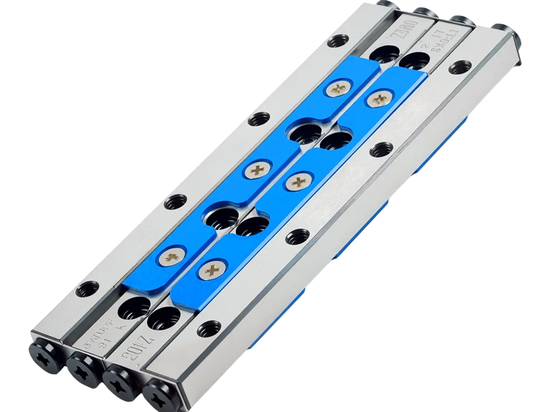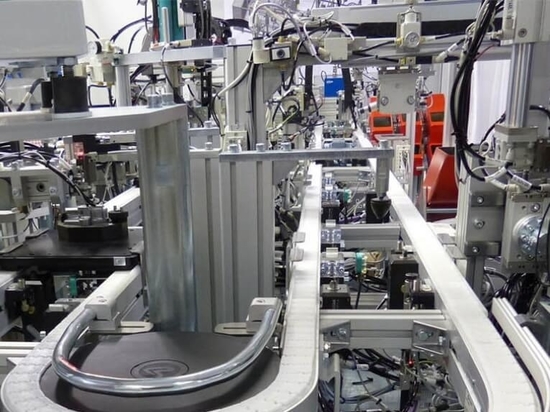
#Product Trends
Cartesian Robots: Guide to The Most Scalable Robot Technology
Types of linear guides and mounting options.
Cartesian robots are a very common and simple robotic technology that manufacturers have used for decades. Across industries and applications, companies are reaping the rewards of this scalable technology. But what exactly are these robots? For which tasks can they be used? How do you know if it’s right for you? This article will discuss these topics and more to help you understand if this robot is right for you.
What Is a Cartesian Robot?
A cartesian robot is physically most unique from the other industrial robot types. You won’t find long swinging arms or sweeping movements. Instead, cartesian robots often resemble a gantry or small crane. People most often identify 3D printers with cartesian robot technology. They are often built over tables or conveyor systems. They will typically have 3 axes of motion. They can move up/down, forwards/backwards, and left/right. They often have an end effector that performs the assigned task. Some examples of common cartesian end effectors include:
1. Printer head
2. Plasma torch
3. Camera
4. Mechanical gripper
5. Laser
Which Industries Use Cartesian Robots?
Since they have a wide array of applications, cartesian robots are found in many industries. Manufacturers in the following industries commonly take advantage of this technology:
1. Aerospace
2.Packaging
3. Metals
4. PCB manufacturers
5. Pharmaceutical
6. Food and beverage
These are just a few of the many examples. Cartesian technology has been around for a long time. Because of this, there are many tried and true applications for these robots. They are also simple to understand and reprogram for operators. This makes them user-friendly for those new to automation. These manufacturers often have the types of applications in which cartesian robots can excel.
Common Applications of Cartesian Robots
Cartesian robots are excellent choices for some applications and poor choices for others. Why is that? A major factor is their limited freedom of movement. Six-axis robots can bend and twist like a pretzel. Cartesian robots are much more rigid in their motion. This may seem like a weakness in their design. Make no mistake, this feature carries advantages that make them exceed all other robot types for certain applications. Here are a few examples:
1. CNC applications
2. 3D printing
3. Plasma/laser cutting
4. Wood routing
5. PCB assembly
6. Inspection
7. Pick and place
There are a few reasons why cartesian robots can excel in these applications. First, these applications are commonly performed upon one plane or dimension. For example, a laser cartesian robot is tasked with cutting a shape out of a sheet of metal. This piece is laid flat on the cutting surface. The robot performs its commanded moves to cut the shape out of the piece. This motion doesn’t require the robot to twist at special angles or rotate to the side of the piece. It is all up/down, forwards/backwards, and left/right motion. Some cartesian robots will have an additional rotary axis at the end effector. If a lot of flexibility and range of motion is required, then another robot type might be best. Automating these tasks has undoubtedly brought manufacturers huge returns on investment.
Another reason why a cartesian robot is a great choice is if the application requires high precision. Cartesian robots can achieve the highest levels of precision of all the robot types. Why is this? Put simply, that more rigid and less freedom of movement feature discussed earlier allows these robots to be extremely precise. High-quality actuators can achieve single and sub-micron levels of repeatability. This means for the highest precision applications, cartesian robots are sometimes the only realistic choice.
Finally, cartesian robots are the most scalable robot platform available. This scalability is in both their potential physical size and ultimate strength. Cartesian robots are as small as mini-3D printers and as large as you want them to be. Rack and pinion-style actuators allow manufacturers to make these systems incredibly large. Their mechanics are also the strongest you’ll find across modern robot platforms. The actuators used to build cartesian robots are often belt, ball screw, or roller screw driven. These mechanics in addition to large gearboxes and motors that don’t have to fit inside a slim robot body-casing means cartesian robots can handle the biggest and heaviest of tasks with ease.
When Should You Automate Using a Cartesian Robot?
Now you know a bit about cartesian robots and their applications. So, when are they right for you and your project? This question can’t be answered precisely just through this article. However, a few questions and considerations can help you start down the right path of understanding if cartesian robots are the right choice for you.
1. Are you looking for cost reductions or throughput increases?
2. Is this application difficult for other industrial robots?
3. Is precision a primary concern?






